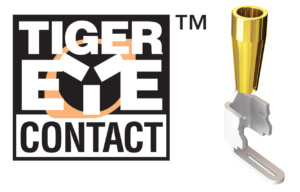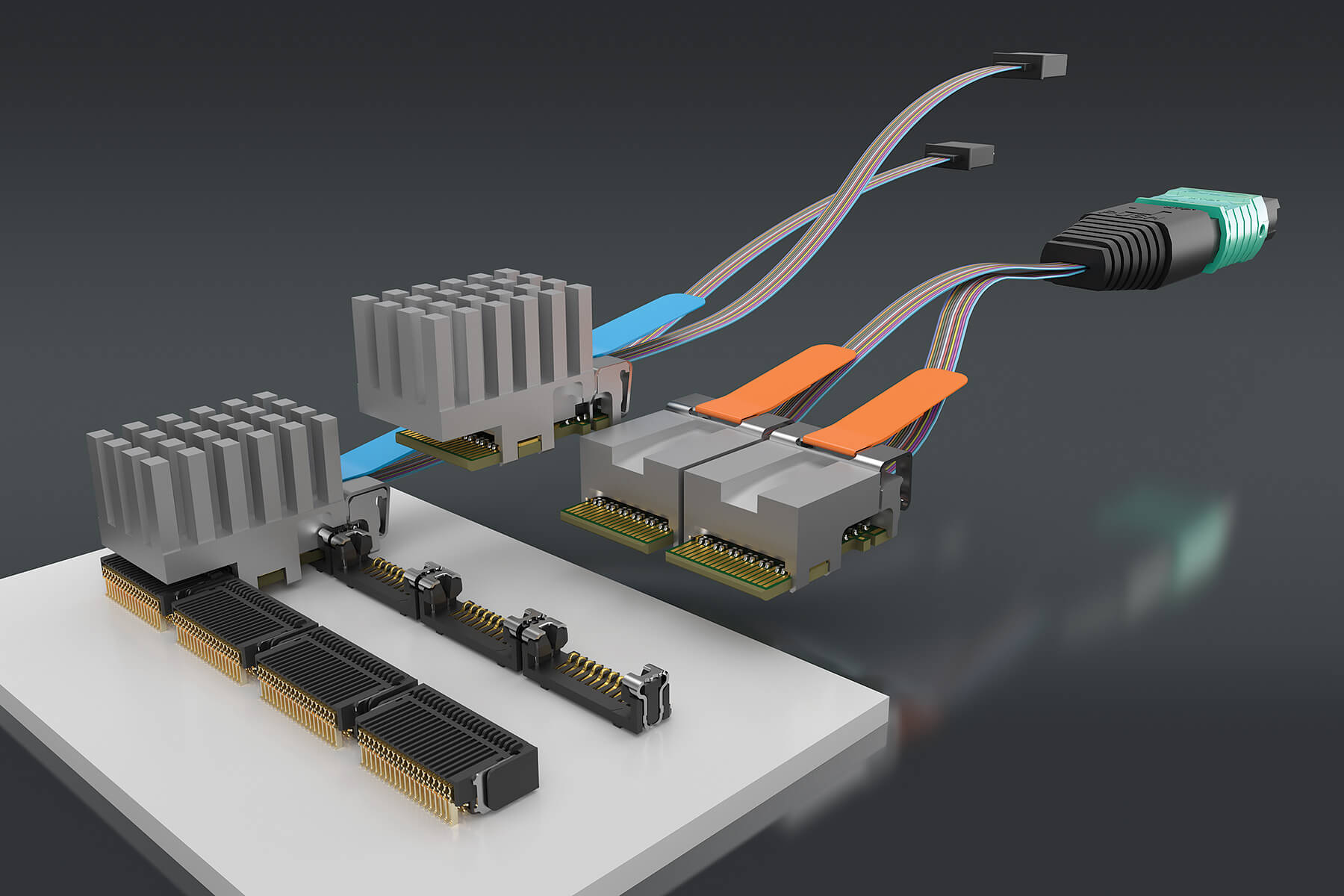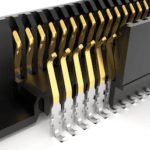Contact materials have always been a subject of debate in the electronics industry. Innovation and industrialization have both pioneered and degraded universal standards of contact designs. Although you could sit around all day to argue which conductor/metal is the better choice, any discussion of contacts must address the plating material selected for the application, primarily gold vs. tin. Demonstrating the pros and cons of both materials will allow consumers to determine what befits their budgets and needs.
Advantages of Gold

Although gold is considered to be a superior conductor of electricity, its use has changed over time. Since the 1980’s, the price of gold has spiked and plummeted drastically, thus refining the standard for electronics applications. Originally, Bellcore designed used 50µin of gold plating on nickel contacts for all applications including leads, cables, and grounding points.
As the price of gold rose and other cost-effective materials became available, adjustments were needed. In a bid to remain competitive, many companies dropped down to 30µin of gold plating without performance degradation. As time went on, the market again rose, replacing gold with gold flashing which is commonly implemented today.
With all of the above options in gold, one must consider the cost and particular application for the amount needed per contact. The use of gold allows for a higher conductance rate, high cycle rate, and is more durable than other contacts. However, the fluctuating cost of gold and its solderability present unique challenges that must be considered when choosing a contact material.
Advantages of Tin

On the opposite end of the spectrum, tin is also a common choice in signal conductance. Introduced thousands of years ago in the form of solder, tin became relevant to electronics in the 1920’s being used to create electrical contacts. Unlike gold, tin is a much more cost-effective option, thus further avoiding economic downturn when calculating design costs. This has promoted a wider use in contacts while bearing the risk of a weaker design that is more prone towards breaking.
The majority of this information is considered common knowledge. However, when discussing gold or tin in regards to contacts in microelectronics, the answer is not always so black and white. Factors to be considered include corrosion, duty cycles, LLCR (resistance values) and cost. Seeing that Samtec is first and foremost a connector company, we strive to implement and provide durable and rugged designs to strike a balance between cost and reliability.
The Advantages of Both
One common solution is selective plating. Selective plating allows for a combination of finishes in one contact, in this case, tin and gold. While tin is inexpensive, it provides a solid soldering point on the tail. Gold acts the as the mating contact, providing the most critical aspect of the connector. As mentioned earlier gold thickness can vary (from 10µin-30µin) based on cycle rate and cost. In this way, selective plating provides a reliable, economic solution.

Samtec’s Tiger Eye™ contact system provides superior mechanical performance with a multi-finger, BeCu design. Its multi-pitch, three finger design, offers redundant points of contact while implementing side-wipe mating. This is ideal for board-to-board mating since it sits flat on the PCB and provides a smooth area of contact.
The primary focus of Tiger Eye™ is delivering a cost-effective, worry-free means of surface mount termination. The micro-slot tail allows more surface area for the solder to adhere to, thus increasing the mechanical strength of the part to the PCB.
Depending on board size and application, Samtec offers a full suite Tiger Eye™ options for board-to-board applications. Our SEML series includes a double row of BeCu with locking clips and weld tabs assuring Signal Integrity – a necessity when mating multiple boards. Other options, such as SFC series, replace BeCu with PhBr while ensuring a high-cycle rate and a variety of packaging options.
Many factors contribute to the performance of an interconnect system; the contact system being one of the most crucial. Design, base materials, and plating finish all impact the mechanical and electrical performance of the contact system.
Please contact us for additional technical support. Samtec’s technology leaders are happy to answer any questions about the contact material selection process.


